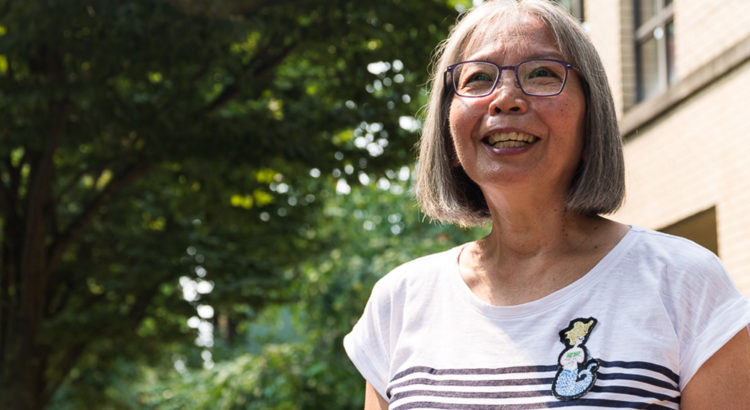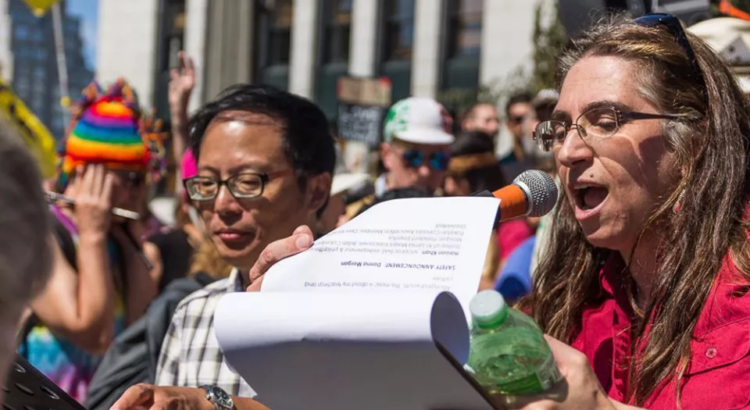- By: Jo-ann Archibald.
Stó:lō educator Jo-ann Archibald, new Order of Canada recipient, imagines the brightest future for her field.
[Editor’s note: Jo-ann Archibald, University of British Columbia professor emeritus of education and member of the Stó:lō First Nation, is one of 15 people appointed Officer of the Order of Canada for 2019. Archibald, whose Indigenous name is Q’um Q’um Xiiem, spent her 45-year academic career Indigenizing education, from teaching, to teacher education and curriculum development, to university education. Archibald spoke to Tyee reporter Katie Hyslop about where she wants to see Indigenous education in 20 years.]
I’d like to be able to look back in 20 years and say, “Gee, we’ve really made some big steps, instead of the small steps we’ve been making over the years.” For example, ensuring Indigenous ways of knowing are more firmly embedded in all areas of education, moving from the margins to core parts of learning in early learning, Kindergarten to Grade 12, and post-secondary education.
Now we’re at the stage where we have pockets where Indigenous ways of knowing have been introduced, and in some areas we actually have Indigenous programs. We have had success for those who are lucky enough to experience these programs. But those are few.
In 20 years, Indigenous ways of knowing should be more widespread and shared in ways that are meaningful, of good quality and engaging. Teachers who take on this role should feel more confident in introducing the topics, the resources and most importantly work with Indigenous families and community members to supplement what the teachers are doing. Research should be connected to these approaches so that we can learn what’s working, what needs to be improved, and share that widely.
Some teachers will say, “I can’t do anything about the Indigenous kids; they come from poor homes,” and feel hopeless. I would hope this feeling shifts to excitement and confidence in working with Indigenous students and parents, rather than feeling it’s a dismal situation. That point came out in a 2015 auditor general’s report in British Columbia; it is called the racism of low expectations. I hope we wouldn’t have that anymore in 20 years time.
And we need to question our biases and keep examining our own perspectives: “What’s my attitude to Indigenous peoples or the history? What has shaped my attitudes and how I approach these areas in my own practice?” Those questions are so important, and even somebody who feels they are not biased, when they look at their assumptions might think, “Oh, maybe I need to get more informed, get some help from others to deal with some of these questions that I have.” I think it’s really important to question, but you need to act on those questions.
More Indigenous teachers!
We seem to have more Indigenous teachers who act as resource teachers in the public school system, which is important, but at the same time we need to have the Indigenous teachers as classroom teachers, too. That leads up to post-secondary education, where many more Indigenous faculty members are needed for teaching and doing research.
I do see more Indigenous people entering post-secondary education now, and these could be the future teachers and educational leaders at all levels of education. The teachers to me are so central to Indigenous students’ success, which is why I have dedicated much of my educational career to teacher and graduate education.
Including more Indigenous ways of knowing in curriculum
We’ve been working on many areas of Indigenous curriculum, preparation of teachers and educational leaders and increasing the educational involvement of community members. But we really need to ensure that the funding for these approaches continues, and that’s a difficult area, because if educational systems and universities start to have a financial issue the Indigenous programs are often the ones that suffer the most.
Currently, there is a requirement from the B.C. Ministry of Education to include Indigenous topics and resources at every grade level and subject area. Some innovative approaches ensure that students have opportunities to be out in nature to learn about the rivers, the land and the affinity and kinship one can acquire by being on and with the land. They have stories to help them, Elders or knowledge holders doing activities with them out on the land, and the teachers help relate this Indigenous knowledge to science, math, reading, physical activity and more. It can be holistic and integrated, starting with the use of Indigenous traditional stories.
In contrast, it’s not doing a little bit and feeling, “Okay, that’s my Indigenous activity for the year,” which may give students the impression that this learning is not that important. It’s important that teachers, whether they are K-12 or at university, try something, and that could be their first time. But it should not be their last time.
Non-Indigenous students benefiting, too
Non-Indigenous students may develop an awareness that Indigenous people were living on this land going back thousands of years. They managed to survive, to live on and with the land, learned or developed technologies to help them and had their own values and laws.
The other part that students have to know is the history of colonization and to think about the results. If they then hear on the news that Indigenous people are protesting some of the pipelines, logging or the missing and murdered Indigenous women, they will have an understanding about why our society is in this predicament today. Whereas when they don’t learn the history, all they see are the images on the news, and they’re not given an understanding about what are the issues, how they’ve come about, what people want to happen and the racism and how that plays out.
More emphasis on education as a life-long journey
I’d like to see more Indigenous families and community members feeling positive about their engagement with the school, that school is not for them a scary place or a place they don’t belong, which is often a prevalent feeling.
We need to also put the same attention on this lifelong or long-term commitment. It is important for these different systems to work co-operatively: the early childhood education to K-12, then K-12 into post-secondary, then post-secondary to career/business/industry. Right now, it’s not a seamless kind of journey for the learners.
Indigenous learners have often been channelled into some areas that are limited, where they may not take the math or English courses that would get them into a university, for example. That can be problematic when it’s done through bias; we want to make sure if learners decide they want to go into a trades program, they do it knowingly and they feel good about it. At the same time, they should have the option to go to college and university.
Twenty years from now we would have much more flexible educational systems where Indigenous learners feel included, that they belong, that they feel good about who they are as Indigenous people, and that there is this caring and meaningful trajectory for them.
Stronger connections between education systems, community
Where I see a lot of exciting things happening right now is in the Indigenous early childhood programs. Across the country they have been working on ensuring the programs are Indigenous — learning an Indigenous language, Indigenous stories — while they’re also doing child development, learning and communication activities that all children should get at that level.
At the same time, post-secondary Indigenous education in Canada is expanding to include more Indigenous courses, programs and support units for students and faculty. What is needed are ways to connect these various public and Indigenous educational systems so that those students who experience Indigenous learning transition successfully to their next level of learning, where that system is also responsive to Indigenous learners and to Indigenous ways of knowing.
If Indigenous students do need any particular supports, there are ways to find the supports, or draw on the strength that child has or strength from the family and community. That’s where the educational systems could then work with the community.
Or later, for career or job areas, there are partnerships where students can have internships and co-op placements. So that child knows, ‘Hey, somebody cares about me,’ and they are prepared and they are given options. In 20 years, that continuum should be a standard way of thinking about Indigenous students.
That kind of approach is starting to happen. I have been involved with a non-profit society, Dogwood 25, that’s trying to look at this Indigenous learning continuum going from the early years right through into career and work. We are trying to get school districts, post-secondary, business and industry working in partnership so we can develop this kind of continuum planning and program approach. ![]()
Source of the article: https://thetyee.ca/Opinion/2019/01/14/Indigenous-Education-Dreams/










 Users Today : 29
Users Today : 29 Total Users : 35460292
Total Users : 35460292 Views Today : 39
Views Today : 39 Total views : 3419007
Total views : 3419007